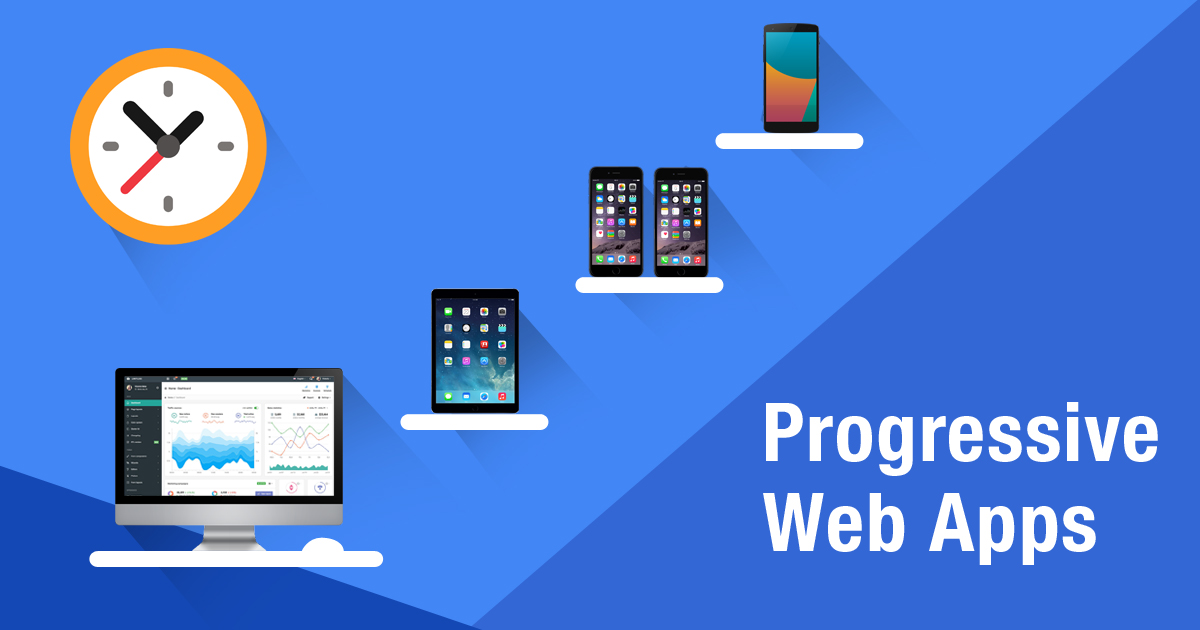Progressive Web Apps (PWAs) were a topic of discussion at the Google I/O developer conference held in May 2016. Although relatively new, many companies are already utilizing these powerful web applications. The Washington Post, with its large readership, and The Billings Gazette, with a much smaller circulation, are using PWAs to engage readers. The practical Currency Converter and Expense Manager PWAs are gaining fans, and so is Snapdrop, which allows users to transfer data across devices. PWAs are also being used for educational purposes. An example is Soundslice, which displays sheet music and includes an audio/video link so that the student can hear how the musical score should sound.
An in-depth look at the properties of these mobile web-app hybrid sites may explain why PWAs are becoming popular.

Developers Define the Properties of a Progressive Web App (Pwa) As
- Progressive: Progressive enhancement is a fundamental principle of PWAs. It means that PWAs are designed to work on any browser, regardless of the user's choice. This inclusivity ensures that every user can access and interact with the app, providing a consistent experience across different platforms and devices. Whether a user is using Chrome, Firefox, Safari, or any other browser, they can enjoy the full functionality of the PWA.
- Responsive: PWAs are designed to adapt to various form factors, making them suitable for different devices and screen sizes. They provide a seamless user experience by adjusting the layout, content, and interactions to fit desktop computers, mobile phones, and tablets. This responsiveness ensures that the app looks and works well, regardless of the device being used.
- Connectivity independent: With the help of service workers, PWAs can function even when the user is offline or has a poor network connection, such as on a 2G network. Service workers are background scripts that can cache app resources, allowing the PWA to load and operate without an active internet connection. This capability enables users to access important functionalities or content within the app, even in offline or low-connectivity situations.
- App-like: PWAs are built using the app-shell model, which means they provide an app-like experience for users. They offer smooth and responsive interactions, such as swipe gestures, touchscreen navigation, and smooth transitions. This app-like feel enhances user engagement and makes the PWA feel more immersive and native-like, blurring the line between web and app experiences.
- Fresh: Thanks to the service worker update process, PWAs can be updated seamlessly, similar to how web pages are updated. Whenever users access the PWA, it automatically retrieves the latest version from the server, ensuring they always have the most up-to-date features and content. This eliminates the need for users to wait for updates to install or manually update the app, providing a hassle-free experience.
- Safe: PWAs are served over HTTPS, which ensures secure communication between the user's device and the server. This encryption prevents snooping and content tampering, protecting user data and maintaining the integrity of the app. The use of HTTPS is a crucial security measure, especially when dealing with sensitive information or performing transactions within the PWA.
- Discoverable: PWAs can be easily discovered by search engines because they are identifiable as "applications." This is achieved through the use of W3C manifests and service worker registration scopes. The manifest file provides metadata about the app, such as its name, icon, and description, allowing search engines to index and display relevant information. This discoverability enhances the visibility and accessibility of PWAs, making it easier for users to find and engage with them.
- Easy Re-engagement: PWAs support push notifications, which enable developers to re-engage users even when they are not actively using the app. By utilizing the Web Push API, PWAs can send notifications to users' devices, even if the browser is closed. This feature allows for timely updates, reminders, or personalized content to be delivered to users, keeping them engaged and encouraging them to revisit the app.
- Installable: Installing a PWA is a straightforward process for users. Instead of going through the traditional app store download and installation steps, users can simply copy the PWA's URL and add it to their device's home screen. This creates a shortcut that behaves like a standalone app. When users open the PWA from their home screen, it launches instantly, without the need for a cumbersome installation process. This streamlined approach improves user convenience and reduces friction, potentially increasing user adoption and retention.
- Economic Advantages: PWAs offer economic benefits compared to native apps. Developing a native app requires separate development efforts for each platform (e.g., iOS, Android), increasing development time and cost. In contrast, PWAs can run on any platform, browser, and device with a web browser, reducing the need for platform-specific development and maintenance. This broader compatibility lowers the financial investment required to reach a wider audience, making PWAs an attractive option for businesses and developers.
Technologies That Power PWAs
# Application Shell Architecture
PWAs utilize the Application Shell Architecture to enhance performance and user experience. This architectural pattern involves separating the core components of the application, known as the app shell, from the dynamic content. The app shell, consisting of essential UI elements and navigation, is loaded quickly, allowing the PWA to be displayed almost instantly. Subsequently, the dynamic content is fetched and displayed, creating a smooth and responsive user interface.
# Service Workers
Service workers are a key component of PWAs that enable background script processes. They run independently of the main application thread and can perform tasks such as caching app resources, intercepting network requests, and enabling offline functionality. With service workers, PWAs can store and retrieve data locally, providing users with a seamless experience even when they are offline or have limited network connectivity. However, it's important to note that Apple's Safari browser does not currently support service workers, limiting their usage in iOS devices.
# Web Manifest (or Extensible Web Manifesto)
The Web Manifest is a standardized JSON file used by PWAs to provide metadata and configuration information to browsers. It includes details such as the PWA's name, icons, preferred display mode, background colour, and other properties. The manifest file enables PWAs to deliver a native-like mobile app experience by allowing them to be installed on the user's home screen, launching in standalone mode, and providing an app-like appearance and behaviour.
# HTML5, CSS3, JavaScript, Media Queries, and jQuery-like Responsive Web Designing
PWAs leverage a combination of modern web technologies to deliver responsive and interactive user interfaces. HTML5 provides the structure and semantic markup for web content, while CSS3 enables the styling and layout of elements. JavaScript is used to add interactivity and dynamic behaviour to the PWA, enabling features like user interactions, data manipulation, and API integrations. Media Queries allow the PWA to adapt its layout and presentation based on the device's screen size and capabilities. Additionally, libraries like jQuery or other frameworks may be employed to simplify development and provide enhanced functionality.
# Transport Layer Security (TLS) Protocols
PWAs prioritize security and data integrity by utilizing Transport Layer Security protocols. TLS protocols establish secure communication channels between two communicating computer applications, protecting the data transmitted over the network from unauthorized access, tampering, or eavesdropping. By implementing HTTPS (HTTP over TLS), PWAs ensure that all data exchanged between the user's device and the server is encrypted, mitigating risks associated with data breaches, man-in-the-middle attacks, and other security threats. TLS plays a crucial role in building user trust and safeguarding sensitive information within PWAs, enhancing their overall security posture.
These technologies allow developers to build PWAs - which in basic terms can be described as a fast-performance mobile website that behaves just like an app. Consider a PWA for your business when you need an application that can run on every browser and device without app store mediation. Since PWAs are less complex than a native app or website, they can easily be developed and come with the added bonus features of security and offline access.
Need a Pwa for Your Business? Call Alliancetek Today at 484-892-5713
AllianceTek employs more than 100 talented and dedicated engineers with industry-leading technology skill sets. Headquartered in Malvern, PA, with offices in New York, California, Texas, and India, AllianceTek’s custom software development provides specific solutions for your industry that will align people, processes, and systems – and grow your business.
Call us at 484-892-5713 or Contact Us today to know more details about think progressive. Think progressive web apps.


